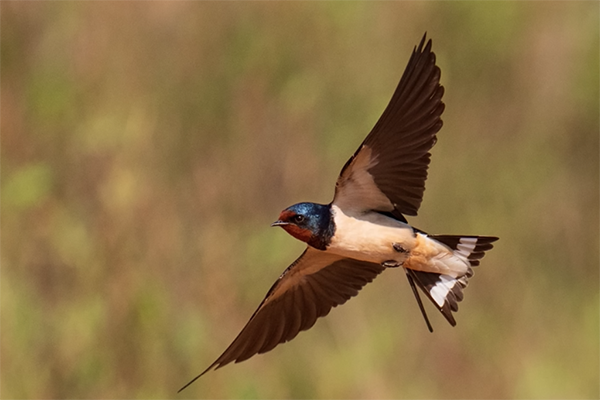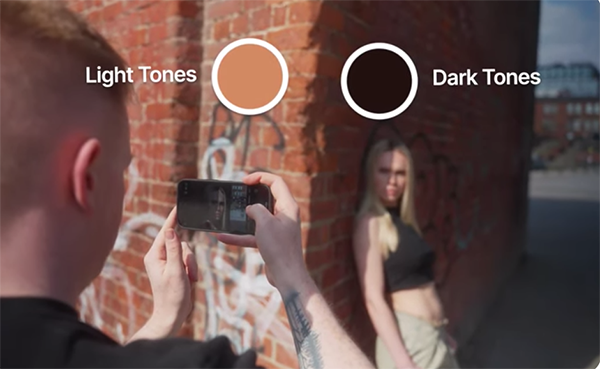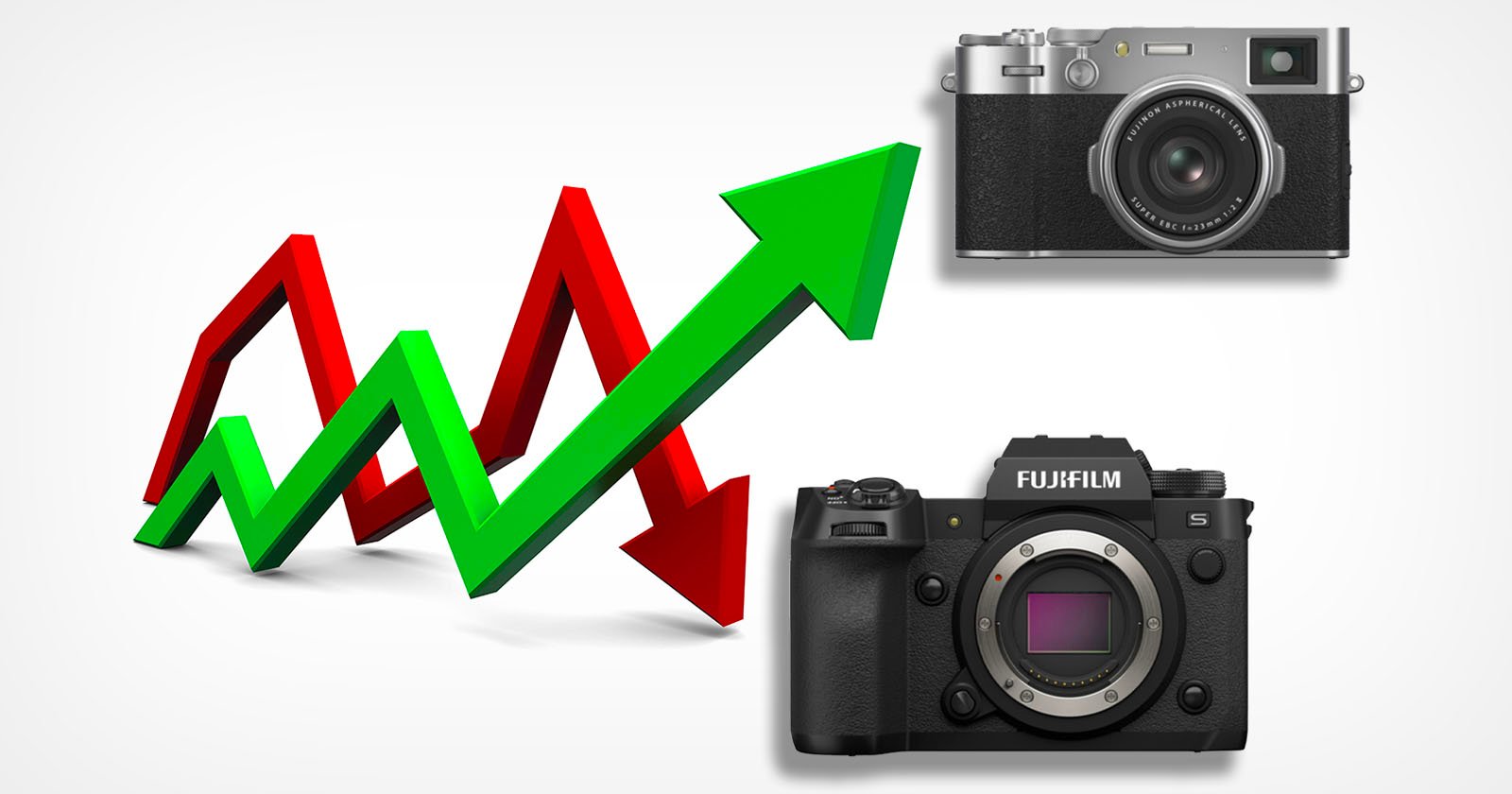President Donald Trump today announced a huge swath of global tariffs that, if enacted, would increase the cost of camera products imported from Japan in the United States by 24%. Products from China would get hit even harder with a 34% tariff.
Falcam’s Move LightGo Takes the Hassle Out of Adjusting Lights on Set
Lighting enthusiasts are in for a treat as Falcam announced a remote-controlled, motorized gimbal-like light control system.
How Four Award-Winning Women Change the World Through Photography
On March 8, International Women’s Day, Leica announced the four winners of its annual Leica Women Foto Project Award. Each woman’s award-winning project demonstrates the power of visual storytelling and exemplifies this year’s competition theme, unity through diversity. PetaPixel spoke to each winning photographer to learn more about their work.
Photographer’s Beautiful Self-Portraits Embrace Volcanoes and Glaciers
Anna Isabella Christensen is a photographer whose self-portraits depict the contrast between the fragile human form and the raw beauty of Iceland’s volcanic eruptions, glaciers, and Northern lights.
New Tech Eliminates Bottlenecks in Pros' Workflow
What exactly is a “workflow,” and how does the right advanced technology increase efficiency, conserve resources and improve the consistency of the end results?
“Workflow” defines the steps taken to complete a project from start to finish. For professional photographers, and for all image-makers who share their work in any manner, the essential steps are capture, cull, edit, deliver. There are intermediate steps, but they all fall into these four buckets.

Capturing is fun; delivering is gratifying. During the editing process, most photographers express their creative talents, and that’s wholly enjoyable yet extremely time consuming. But the culling step, although necessary, is challenging. An essential part of the overall post-processing segment, weeding out the bad (or least-good) images and collating the keepers, successful culling requires viewing and evaluating every shot.
The Bad Old Days
Back in the last century, when we all used film and physical tools like lightboxes and red crayon marks on contact sheets, culling was an excruciating chore at best—but it was unavoidable, so we all grinned and bore it. Admittedly, the grinning part was intermittent.

When digital cameras matured to professional levels, and pros mastered computers, all of the workflow steps improved. However, digital photography brought its own baggage: instead of dozens of rolls of film to soup and proof, photogs now had to deal with a couple thousand—or more—image files from a single session. At 15 seconds per image, it takes 250 minutes to properly scrutinize 1,000 images. And a lot of eyedrops.

Harnessing the Power of AI
Photographers benefit from AI in many ways. The right AI-powered editing software can learn precisely how you edit and reproduce your actions. And it’s substantially more economical and faster than training an assistant, or apprehensively outsourcing the responsibility.
Nowadays, modern photo culling tools—like Imagen—allow photographers to cull images with speed and consistency because Imagen learns and replicates the thought processes that mimic the human brain, swiftly selecting the best shots based on the photographer’s individual style and preferences. Advanced tech allows us to reimagine the traditional workflow to make it more efficient – such as in the case of edited previews where photographers can now cull their photos while previewing what they would look like edited. Less time culling means more time running your business, more throughput capacity and—very likely—expanding your customer base. These advancements free up photographers to focus on the more creative aspects of their work while maintaining full control over their selections. One of the leading solutions is Imagen.
Less time culling means more time running your business, more throughput capacity and—very likely—expanding your customer base. These advancements free up photographers to focus on the more creative aspects of their work while maintaining full control over their selections. One of the leading solutions is Imagen.
Imagen is an all-in-one platform that lets you cull, edit, back up and deliver your photos more efficiently. Hundreds of thousands of photographers use Imagen to process hundreds of millions of photos annually, saving countless hours of tedious steps that hold them back from reaching their true potential.
One critical component of Imagen, one that can be of value to all, is AI Culling.

AI Culling
Imagen’s AI Culling is an upgrade to your workflow, not a disruption or massive change that requires learning new software or techniques. Experienced photographers who already have tried-and-true post-processing procedures don’t need a complete overhaul of their workflow (although it’s always good to consider new ways). But even the most expert pro can definitely benefit from a smarter way to do what they already do.
Imagen’s desktop app, available for both Mac and PC, integrates effortlessly into your existing workflow and is fully compatible with Adobe software, including Lightroom, Photoshop, and Bridge.
You can get started by creating your own Personal AI Profile for a completely tailored editing experience based on your personal style and past edits. Not enough photos for training? Try the Lite AI Profile for a quick start using a preset and get editing right away or explore the range of Talent AI Profiles created by notable pro photographers from around the globe to apply the unique styles of top photographers.

Main Features of Imagen’s AI Culling
AI-powered Photo Selection
Imagen changes the way photographers cull by using AI to mimic their selection process while keeping them in full control. It doesn’t replace their judgment; it automates it. It automatically detects and groups photos by duplicates, sharpness, closed eyes, expressions, and even composition quality. It filters out unintentional blurry shots, misfocused images and accidental goofs instantly.
Edited Previews – Cull with the End in Mind
With the Edited Previews feature, Imagen enables you to see how your photos will look after editing while you’re making culling decisions. It works with your AI Profile of choice to reflect your desired editing style, helping you choose the best photos from the start. Of course, the freedom is always yours to fine-tune and enrich the process.

This feature is especially beneficial for professionals who often work with custom presets and/or AI profiles, because it helps them immediately identify which images align with their overall vision and style and allows them to preview them before committing to the edit. And it eliminates the frustration of keeping photos that won’t work well in the final edit. Your vision and style is your brand, so consistent output is invaluable.
Noted photographer Tommy Reynolds said that Imagen changed the way he looks at photos as he finds himself including photos he otherwise wouldn’t have – thanks to the new perspective of seeing it edited.
Final evaluation is fast and easy. The entire experience is customizable – you can also decide how strict you want the AI to be with the grouping. Photos are auto-grouped by similarity, so you can review and choose the best in seconds. Also, you can set custom preferences for AI-based ratings (stars, colors, flags) to simplify your workflow.
Seamless Integration into Your Workflow
AI Culling works within Imagen’s app, so you can move directly from culling to editing, storing and delivering to clients. The results sync seamlessly with Adobe Lightroom, Photoshop, and Bridge; no extra steps are required. Throughout, manual overrides are possible at any stage, ensuring you’re always in control.

For true, end-to-end “Edit to Delivery” facilitation, you can incorporate Pic-Time into the final step.
Imagen AI Culling Pricing
Imagen is available on a monthly unlimited subscription for $18 a month, billed monthly, or $144 for an annual unlimited subscription.
Join the thousands of photographers who are enjoying the benefits of Imagen and AI Culling. Upon signing up, new users are gifted 1000 free edits to experience the editing suite.
∞ Shutterbug Staff
Shoot High-Action Photos of Fast-Flying Birds with Any System (VIDEO)
Earlier this morning with posted a video explaining the best iPhone camera settings to use to capture photos with maximum quality. We’re following up on that now in this tutorial from pro Any Rouse with a variety of high-action shooting techniques for birds in flight that can be employed with whatever camera system you use.
Rouse (aka wildmanrouse”) is an award-winning British wildlife and aviation photographer who “travels the globe on the search of that perfect shot.” He’s also a very adept educator who describes today’s episode like this: “Here’s my lowdown on how I shoot fast-flying birds, which is designed to demonstrate the step-by-step approach” using images of twitchy Barn Swallows to illustrate the techniques.
The good news is that you don’t need any exotic gear or super-advanced skills—just the practical advice that Rouse provides. As he says, “there’s no such thing as an impossible shot, you just have to put on your Sherlock Holmes hat and do a bit of problem solving.” Fortunately, he’s done all the research for you.

Rouse photographed the Barn Swallows during a recent trip to Africa, and they’re ideal subjects for this discussion because they move quickly and erratically. His first recommendation is to sit and watch before pulling out your gear in an attempt to “work out the bird’s flight paths” that can be somewhat unpredictable.
The next step is determining the point of view you desire, whether its capturing the bird from the front, side, above, or below, and then choosing your vantage point accordingly. One interesting technique is to make the shot just as a bird banks and turns direction because this is when they’ll be gliding at a slower speed.
Rouse demonstrates several more effective techniques that aren’t difficult to emulate with success. And it’s especially important to see how he proceeds in a way that differs from other photographers who blast away in high-burst mode—hoping that one of their dozens of shots captured a decisive moment.

Instead, Rouse shoots for quality, not volume, and he’s satisfied with a mere handful of nice photos to take home. One key is anticipating action, rather than trying to capture it while relying upon good luck. There’s much more to see and learn on Rouse’s instructional YouTube channel, so be sure to check it out.
And don’t forget to watch the related tutorial that we mentioned above for those times when the only camera you have available at the moment is an iPhone in your pocket..
SD Express Finally Has a Use, But It Dumped Its Biggest ‘Advantage’
SD Express, a format that has been completely ignored by the camera industry, finally has a use case. In today’s Nintendo Direct, the company said the new Switch 2 would make use of microSD Express for the faster transfer speeds. Unfortunately, it dumps the biggest “advantage” originally touted by the SD Association: backward compatibility.
The Best iPhone Camera Settings for Spectacular Results (VIDEO)
If you want to make the most of your iPhone camera you’ve come to the right place for achieving the highest possible image quality and a faster workflow. Today’s tutorial from the Reeflex Camera YouTube channel demonstrates everything you need to know for getting the job done to perfection
Our unnamed instructor provides a full breakdown of his recommended settings and how to use them. He’s working with the iPhone 16 Pro, but much of what you’ll learn is applicable to other models as well. You’ll see how he configures the camera for both portraiture, commercial assignments, and more.

A wide-range of topics are covered in less than 12 minutes so you may want to jot down a few notes. You’ll learn the best way to shoot stunning portraits in Photo Mode, as well as an “HEIF setup” for applying creative features like Photographic Styles.
Other topics of conversation include how to shoot 2X at 48MP, and the advantages of ProRaw for serious editing flexibility at full resolution. There’s also an interesting preview of employing Bayer Raw for total control.
The behind-the-scenes video takes place on the streets of Manchester on a beautiful sunny day as our instructor demonstrates his suggestions with a pretty model. We recommend having your phone handy while watching the lesson so you can experiment with various techniques and replace the default camera settings with those that are recommended.

There’s no one approach that works best in all situations, which is why the goal of this lesson is to help determine which setup is advisable for your type of mobile photography, the specific style you prefer, and the manner in which you display and share your photographs. By the time the video concludes you’ll have a clearly defined strategy that’s guaranteed to serve you well.
There’s much more to learn about the intricacies of smartphone photography on the Reeflex Camera YouTube channel, so make sure you pay a visit when you have time to explore.
We also recommend watching the review we posted recently that demonstrates how to streamline your messy photo library with Excire AI image-management software that features an intuitive interface that integrates seamlessly with your existing workflow.
Amazon Makes ‘Last-Minute Bid’ to Buy TikTok as US Deadline Looms
Amazon has reportedly made a last-minute bid to buy TikTok in the U.S. as the deadline for the sale of the popular video app approaches on Saturday.
Compact and Interchangeable Lens Camera Demand Is Diverging
The resurgence of compact cameras is well documented, with consumers flocking back to small, pocketable dedicated cameras. Even as smartphone image quality has continued to improve, photographers are again seeking a special, bespoke photographic experience. A new report from BCN+R in Japan notes that not only are compact camera sales increasing, but interchangeable lens camera demand is starting to wane.












